How much do you actually know? An interview with Alan Flusser
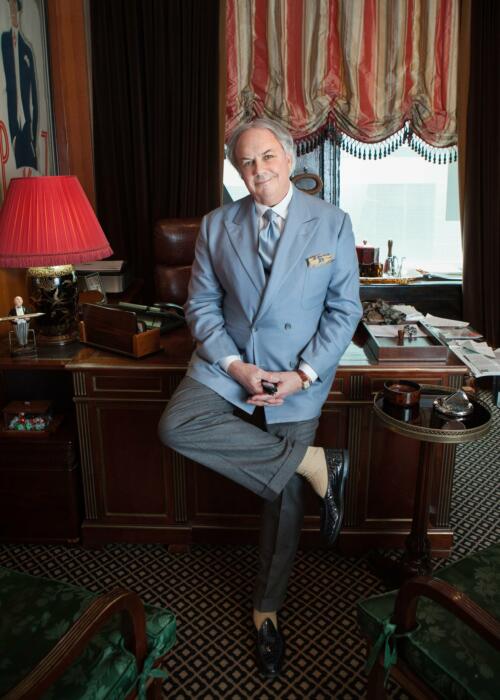
By Manish Puri
A few months ago I had the privilege of speaking with Alan Flusser about the history of New York bespoke tailoring.
From the opening beats of our conversation it was clear that Alan wasn’t about to be constrained by the narrow parameters of my article. How can one speak about New York tailoring without benchmarking it against the best of Savile Row? How can one appreciate New York tailors without acknowledging the Italian traditions that many of them were raised in? Why should Alan survey the scene without contextualising his unique place within it?
So, across more than two hours of charming conversation (pausing only at the behest of Zoom Basic’s time limit), Alan and I spoke about a variety of subjects that spanned his career in menswear. And I thought it was a shame so many didn’t make it into that NY bespoke article.
So here I’ve included some highlights of our discussion, including several themes that I think would be of interest to Permanent Style readers: wearing unstructured tailoring, learning to dress well, the differences between Savile Row and tailors in the US, and some fascinating insights into the sartorial importance and cultural impact of the colour pink (which I wrote about a few months ago).
But first, we began with a brief history of Alan’s first taste of buying custom/bespoke clothing.

On his introduction to custom
I ended up having my clothes custom made for me since I was 17 years old, though it was not by design, no pun intended. My girlfriend's father was a self-made real estate guy and he needed his clothes made because he was big. After seeing that I was very interested in these things, he said to me, “Why don't you come to the tailor and just help me pick out clothes?” So, long story short, I did that.
He liked the results, and was always very entrepreneurial, so he said “I have three or four friends who can afford to go to tailors. You could take them, advise them, and they could pay you a commission, and you could get a commission from the tailor,” which I thought was a great idea.
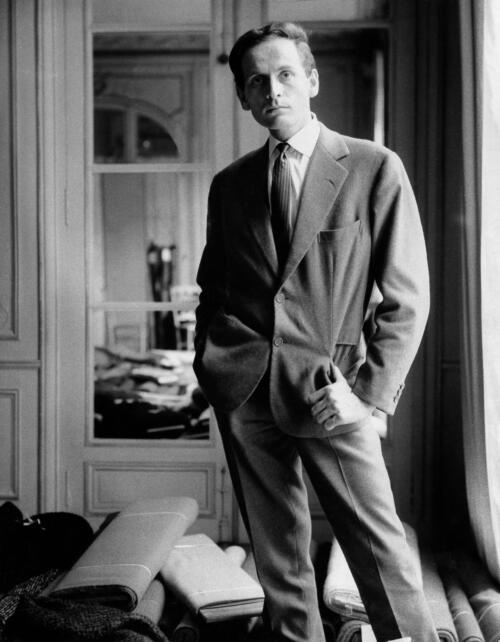
So I started doing that, and I told the tailor, instead of you paying me a commission, why don't you just give me credit towards clothes, and I'll make clothes as we go along. So from the age of 17 or so, I would go to a tailor and I was interested in having him help me become the best-dressed person I could be.
When I went for my first important job interview for Pierre Cardin (above), I brought four or five of the garments I had made for myself to show them. I guess they thought they were sufficiently interesting enough to qualify, and I kind of started my real career.
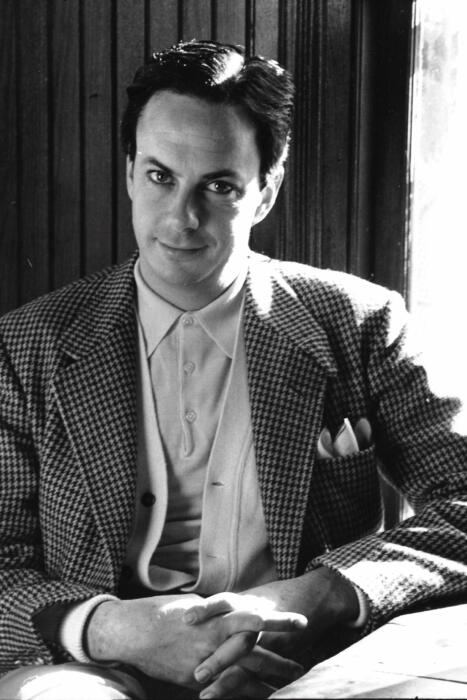
On visiting the UK
I was making clothes in England in the Cardin era. I was going to Scotland and to Shetland and to different places. We really took advantage of what England had to offer. Ralph and I are the ones who went to these places, took these old mills and had them make new things for America. So, I spent a lot of time in the UK, and was having clothes made there.
I stayed at all the hotels, and I finally decided Claridge’s was my favourite because it was easier to get in than the Connaught. Every time I came downstairs to have a drink, they would play some American tune – on cue.
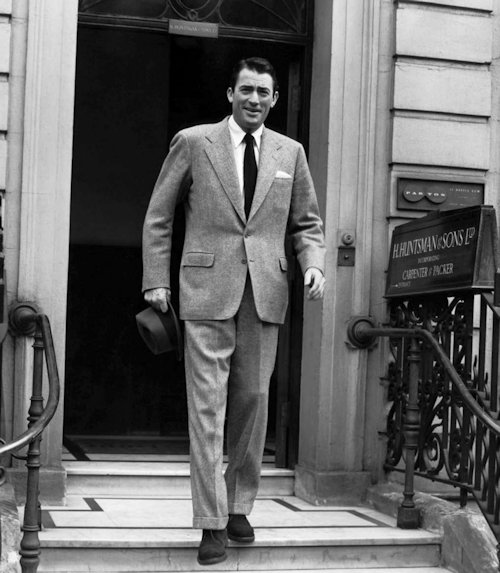
On Savile Row compared to America
Savile Row is the most unique collection of tailoring people in the world. You have all these tailors, and they have their own house look, and that's how they've survived. In an English suit you're going to get into less trouble because they have a house style, and it's something you can judge upfront.
There's also much more of a uniformity. Of course, there's differences in subtleties between Huntsman and Poole and Anderson and Sheppard and Davies. But from 10 feet, they could look similar.
In America, tailors came into being because they made something that was different from everyone else - it was much more distinct. The tailoring represented more of a lifestyle.
And because we don't tend to have a house style, and people need business, they're apt to make more stuff that caters to what people want to have. In America, it's very dangerous when someone says, “I'm going to make whatever you want”. You're really in a lot of trouble. It means you are now the designer, and it’s going to live or die based on what you tell the tailor.
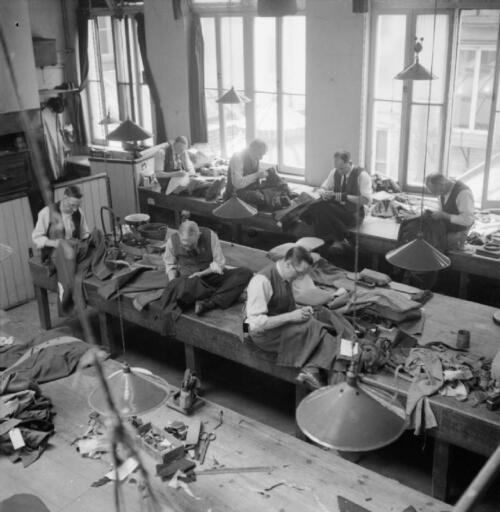
Plus, with England, along with the actual making of the clothes, you tend to get more information about tastes and style, even if it's more conventional, than you would in America - where at this point, very few have any real background with regards to the history of clothes or what differentiates the twenties or thirties from the fifties.
There's more of a continuum with each tailor in London. You'll get to see how the English are putting together ties and shirts with suits, and you're more apt to learn something about the skill of it, because it is a skill.
Savile Row is still a little bit of an oasis of learning in that sense - one place that you can get to understand what you look good in and why. There are so few places like that now. America's not as tradition bent, and today it's even less so - it's more like, “well, what are you making now?”
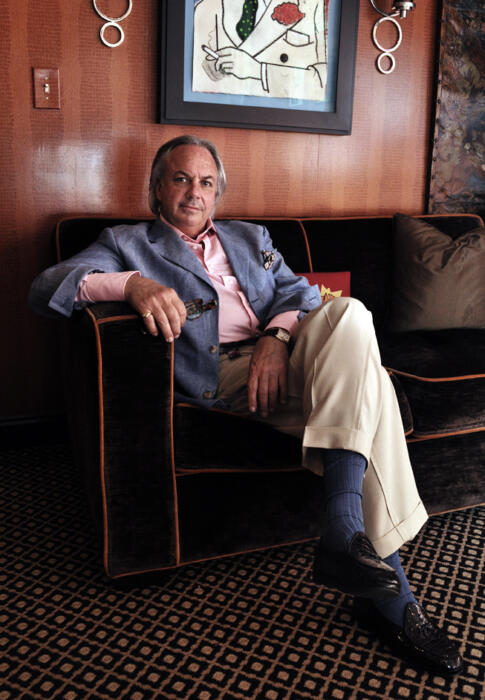
On pink
How could you have ever known [when writing an article on pink] that you picked up a sartorial poker, whose cultural origins and social impact transcend not just some coded gender identity, but the American soft-shoulder sensibility becoming known as Ivy League.
Unfortunately I don’t have the time or scholarship at hand to elaborate on the referenced wearable - that being the original Brook Brothers pink oxford button-down. However, make no mistake, this article of attire is inextricably tied up with the elitism, tradition, and even sexual coming of age of the period. A creation of Brooks Brothers, they turned its ownership into one of the Ivy League’s standards and an obligatory rite of membership.
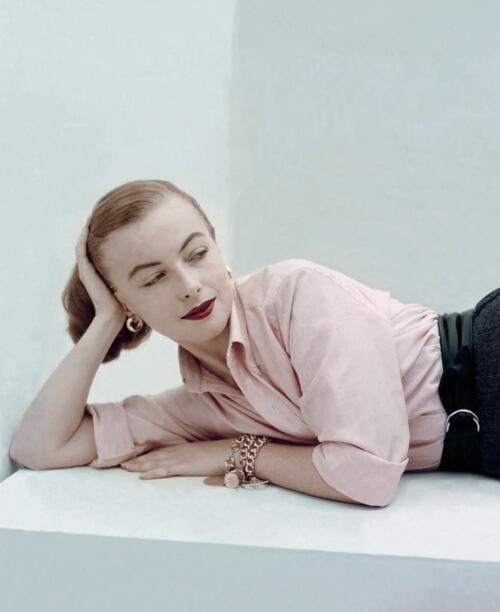
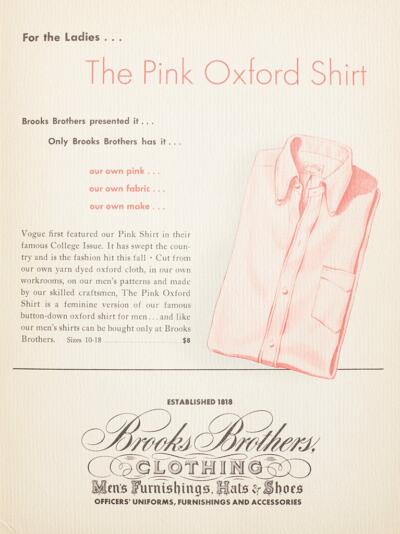
I’ll just point you to a 1949 Vogue and Brooks Brothers woman’s advertisement (above) that sanctioned the pink male classic for the opposite sex, that also happened to spearhead the first Brook Brothers women’s collection. (The model above is also wearing a Brooks Brother Oxford shirt for the 1949 Vogue College issue).
Once the beachhead of pink for men had been forged, other pastel garments awaited, followed by the country’s increasingly sportswear-driven fashions, including golf-course brights and all measure of high-colour nautical blues for island and water life.
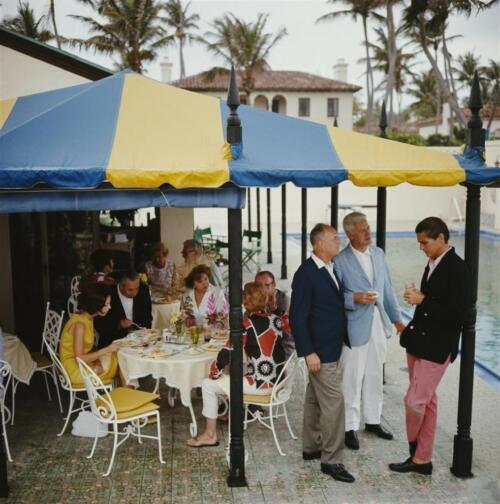
Palm Beach became America’s most important sportswear breeding ground, and in America’s menswear industry the pioneer for at-play sportswear, which included more colour in menswear than had ever been seen.
The real story of pink and its outsize impact on colour in menswear is probably one that will never been written, yet it is well-documented in the fashion pages of the early Apparel Arts and Esquire magazines.
So…pink is pretty much a uniquely American tale. But fortunately, it's one that I can still enjoy, recollecting my clothes-conscious father attired in one of his ‘346’ Brooks grey-flannel lounge suits, obligatory Brooks pink BD, black ground club tie, and shod in pink hose and black tassel slip-ons. Astaire never danced too far from his sartorial reveries.
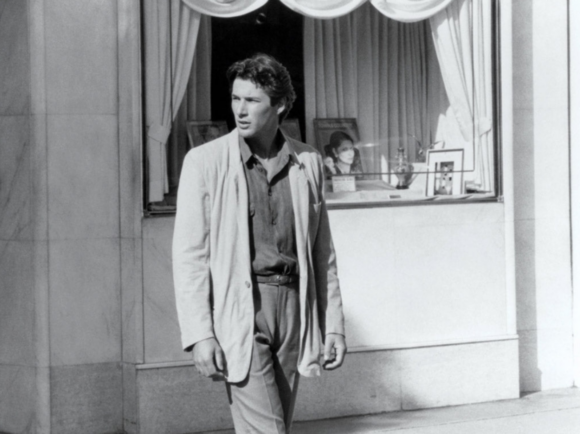
On unconstructed tailoring
The thing about America that makes us unusual is that we invented sportswear. We know how to appreciate soft, unconstructed, comfortable clothes. We are the country of comfort.
There were lots of obstacles to unconstructed tailoring, but we've been moving towards it inevitably, and COVID has done more to advance it than anything. Since the eighties, every good retailer in the United States has carried some kind of unconstructed clothes and tried to get his customer to understand it three or four different times.
That came very slowly, because it was always more expensive. The term unconstructed denoted to people, “Oh, this is less expensive”. No, it is actually more expensive, because you have no linings covering everything up so the tailoring has to be very, very good.
And there wasn’t a whole lot of makers of soft clothes outside of Italy. Because it takes more than just tailoring skills - it takes people who have a sense of style and understand what's going on in fashion, and how to translate that into their own work.
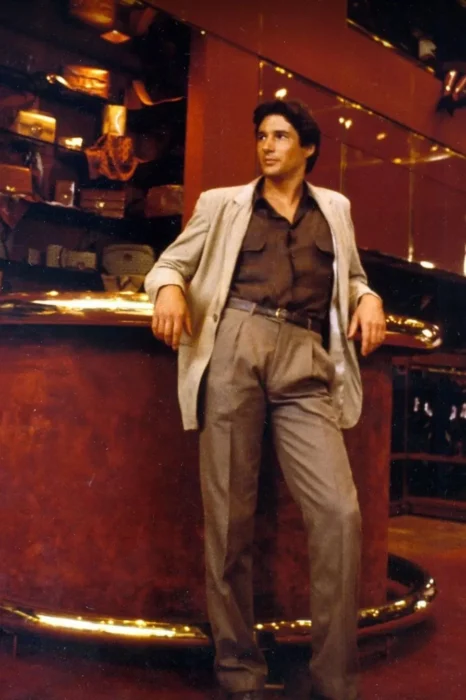
Plus, when you're talking about the attitude of unconstructed dressing, it's a lot more difficult to teach because you don't have the structure to hold it in place. A suit was always the easiest of things for a man to wear. Anybody can put on a blue suit and a white shirt and some tie that matches - that's really easy.
But if you're asking someone to, all of a sudden, wear an unconstructed blue blazer and let's say a grey pair of pants, and now the shirt, what are we doing with the shirt? What kind of collar? Tie? Am I wearing a pocket handkerchief? I mean, it's asking a man to do much more. That's a whole ‘nother void, so to speak.
We don't have people that can teach how to dress at retail. We used to, but this is an education, an illumination of the idea of wearing something that looks similar to what you are accustomed to seeing on someone from the outside, but feels totally different. And you wear it totally differently.
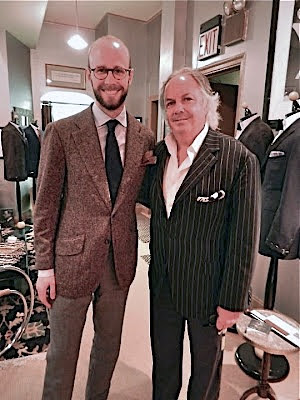
On fashion vs permanent style
The issue with, let's say Armani, was that one year you had low gorge, wide shoulder clothing, long - and the next you had rounder shoulder, tubular looking clothes. All of the previous ones were obsolescent. The great majority of fashion sold in the seventies and eighties and nineties is obsolescent.
That's one of the reasons of Ralph Lauren's success - he has a higher percentage of clothes that don’t become prematurely obsolete than any other designer in the world. And that must resonate with people.
I think that plays a big role in terms of Simon's idea of permanent style. Things that transcend the moment - and for people to be able to distinguish that requires some education on their part.
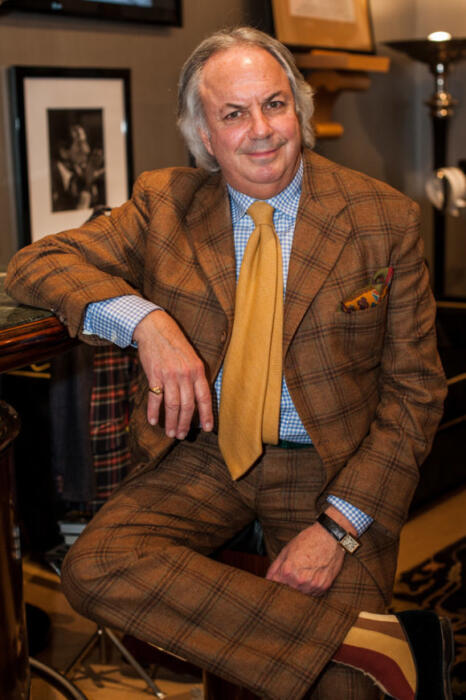
On learning to dress well
Being able to learn how to dress well isn’t that complicated.
I mean people have to know what colours flatter them the most and why; what proportions flatter their individual physique and why. And that's actually what's difficult about it - getting the right information.
What's easy about it is the fact that it's finite. In other words, the width of your shoulders is not changing. The size and shape of your head is not changing. It's just that it's very difficult to get the right information for each individual person.
That's why our shop, I think, has all these years behind it. I say to customers, it doesn't cost us any more to give you the right information than the wrong information. It doesn't cost us any more to make something fit you properly, than not fit you properly. But what goes into it is an awful lot of knowledge. And, to a certain degree, that's what dressing is about, how much do you actually know?
Manish is @The_Daily_Mirror on Instagram
Images of Alan courtesy of Alan Flusser Custom
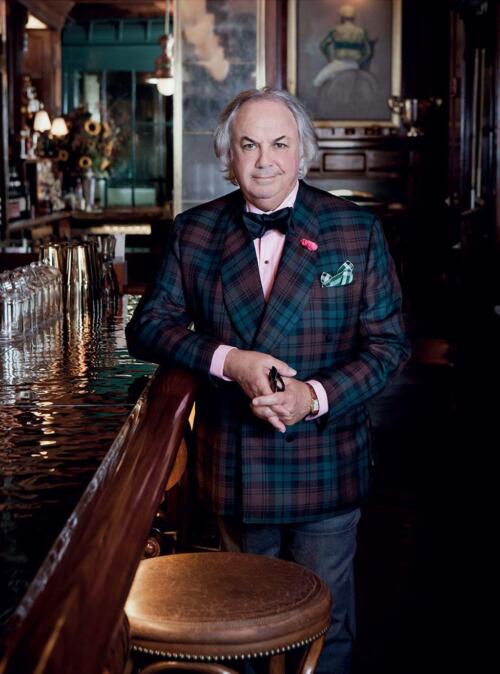




























Very sensible insight as to Ralph’s staying power. Never thought of it that way.
But, of course, you could just as easily say the same thing about Brooks Brothers (where Ralph used to work).
The real question that I find fascinating is how, or why, RL became so overwhelmingly popular while Brooks Brothers, which originally produced a lot of RL’s style ideas, faded away.
Highly enjoyable! Never been too sure about Flusser’s personal style, but that combination of houndstooth jacket, ecru knitted polo and cardigan, stopped me in my tracks. Lovely.
Agree. Not to take anything away from his career, experience or knowledge, but I would look at Bruce Boyer for inspiration.
Ralph Lauren in his own fashion is a (for me) great book and Flusser has taught me more about clothes than anyone. The other day I saw a clip of RL at a show wearing a black tuxedo, blue jeans with paint splashes and bright neon pink trainers. Thanks for this Manish
That outfit was not stylish, just a naff and egotistical statement, ie. “I’m a billionaire who named my brand after myself so I dress how I like”. It was very “nouveau riche”, the antithesis of real, “old money” Ivy League style.
Quote “I dress how i like” so do I. Is that bad?
Agreed. The stone wash jeans and cow boy boots and dinner jacket was pushing it, the neon trainers were straight tacky.
I think Ralph leans too far into the old man dementia angle when he makes these style moves.
No need to resort to class-based cliche, it just looks stupid.
Thanks Josh, but let’s keep the replies civil as well please
I pre-ordered the RL book and have opened it precisely once. It’s a hagiography and the photography celebrates the worst of RL IMO. For someone who knows so much about menswear, Flusser dresses terribly. The sock choices for crying out loud. Tartan DJ with jeans?
I’d disagree on the book Josh. If you’re interested, my thoughts on it are in a full article here
Interesting.
Personally I’ve always found Flusser’s personal style to be too garish.
But having worked in NYC for ten years my experience is that American style falls into two categories – the ‘I haven’t got a clue’ suit supply punter or the ‘ Over the top Dandy’.
The art of subtlety seems to have been completely lost.
This I find strange given the great icons they’ve had in the past.
I agree with your two categories here in NYC.
The latter category tries too hard and want to be noticed. I think that men who talk about weight, texture, styles, etc. really don’t appreciated clothing and are just going through the motions.
I’ve had suits, blazers, trousers and shirts made by Alan Flusser. He is a peculiar man with very few words. It was amusing to see him make sparse comments about an item that I was having made by his tailor.
Flusser’s personal style is colourful rather than garish to my eyes. Some might call it louche but relaxed would be my description. He is very much his own man, a confident individualist who knows what he likes. My own Anglo-American taste, like Wouter above, is closest to that of Bruce Boyer before his unfortunate flirtation with Italian tailoring and shirts.
Was this interview with Flusser recorded? If so, I would love to see the entire video to hear his wisdom in the context of the conversation.
It’s always great to hear from Alan Flusser who introduced many of us to fine, custom made clothes. He did so for me.
I ve akways admired Flusser for his insight AND his personal style. He knows so much that has entered a state of radical freedom, transcending all conventions and achieving a true personal expression. That is very cool, courageous, stylish. I like him in his trackpants much more than Boyer
I like Boyer’s style but it’s not a patch on RL and Flusser in regards to having a “state of radical freedom”. I haven’t seen much of Boyer to really judge though. What I’ve seen with Flusser is his style is divisive like Marmite, sounds like we are both fans. Any fave looks AA? Or something you have done/worn in your life?
Not that I try to copy Flusser’s templates in my own dressing, it is more about the attitude, David.
I think Flusser’s skill with color and pattern is particularly impressive. He always wears very beautiful, unexpected, complex colors that are outside of the safe (and boring) Boyer-esque brown-green pallette. Years ago there was an article on him on Articles of Style (or something like that) that has more pictures of him. Check it out!
Bruce Boyer’s style is much more mature in my opinion. And personal, too, although it doesn’t shout. As far as I’m concerned, what’s touted as freedom in the context of style is usually a superficial manifestation of consumer mentality.
Everyone has his own needs and priorities. Alan Flusser is the pioneer, he is pushing the frontier of the possible and does not care so much about comformity/agreeableness. Dressing can be a creative field if you posit it as such. For Boyer and most people it is not, it is more about communicating status, certain financial/cultural/social capital, etc. Can’t really say who is more “mature” if they are both excellent when measured by different metrics
Fascinating insights. As an American who has always tried (and not always succeeded) to dress well, I admit that only recently—as I near 40–have I begun to appreciate and embrace the outsized impact that Ivy Style has had on my own personal style. It was never something that I consciously aspired to, but it’s always been there through the years. Frankly, you can’t even attempt to dress well as an average American without embracing Ivy to some extent. For that reason, we tend to take it for granted. The in-depth treatment on PS has certainly accounted in large part for my own awakening.
Thank you FS. If you really want something in depth, the Ivy series on the podcast Articles of Interest is worth a listen
Great article. Mr. Flusser always brings us back to the fundamentals, checking our wanton desire to flog the rules, many of which can be found in one or several of his sartorial bibles. To me, the most relevant two sentences of this piece is when Mr. AF notes that in order to dress well, people should understand “what proportions flatter their individual physique and why. And that’s actually what’s difficult about it – getting the right information.” This brings to my mind the Neapolitan craze. It’s almost painful to see guys with wide hips and narrow shoulders jumping on the Neo band wagon, wearing jackets with no shoulder padding and sometimes trousers with forward pleats, for example, thereby exactly accentuating their imperfections and appearing horrendously out of proportion when a good English suit with a little bit of defect-hiding padding would serve them so much better. Despite the many benefits of innovations like online world-wide shopping, I think this is one of the detriments to being able to purchase items remotely and discovering your style based on internet forum talk and not having the advantage of the counsel of a good tailor or even menswear specialist who would say, “Neapolitan is not for you, good sir. Your head is slightly oversized, and some subtle shoulder padding will make you appear a bit more proportionate”. Thank you for the article.
No problem Jackson. For what it’s worth, I agree with you generally, but I also think it’s worth adding that Neapolitan tailoring is fundamentally more casual and suits different styles and lifestyles in ways more structured tailoring cannot.
I see your point, however, given that the choices are rarely binary, that is, Neapolitan or English in continuing with my example, a person with narrow shoulders and large hips can (yes, even with a RTW jacket) have a tailor extend the shoulders with wadding as opposed to having shoulder padding to maintain a relaxed and casual appearance. It takes a little more work to achieve the right silhouette, but it’s never impossible. No man should ever sacrifice his silhouette (appearing juvenile or feminine), just to stay withing a style frame craze.
Well, extra width can make the shoulders more sloped, being a longer line. And I wouldn’t say that makes for a more relaxed appearance, or say it’s a style frame craze. It’s just style. I would also be very hesitant about getting shoulders extended on a suit
Excellent points here Jackson! It’s one of life’s mysteries why so many men simply refuse to consider their proportions when choosing clothing. Ignoring the advice of a qualified professional whose job it is to help men look their best is a serious case of delusion. Heaven forbid that a man would actually make a decision to improve his appearance by proper diet and exercise and then, make appropriate clothing choices. Or accept that he’s simply not going to do the work necessary to change, and keep, his appearance and use tailored clothing to help him look as good as possible.
Agree, so many people only know Neapolitan because it boomed along with Instagram for a minute. However, I do think a good Neapolitan tailor will cut accordingly and not simply soft everything. Actually, in my experience, a lot of the time the flamboyant tailor/cutter/front of house often do not suggest the same to their clients, they work with the client to make them look their best.
Agree, same from mine, Bob!
Make mine Italian please. Luca Corderi de Montezemolo, Tomasso Capozzoli and Luciano Barbera are my fashion inspirations.
I am sorry, but I found his book extremely disappointing and also mostly inappropriate. Also, what I read here from him seems to be from a small tiny world long gone, somewhere in Northeastern America. I am not sure I would wear anything I see from his oucs either. No offense, but I do not understand how his taste can be seen as influential or relevant.
My comments about Alan are entirely about our personal friendship and not about individual clothing preferences. Alan is one of those few people who kept me sane and mentally stimulated with his emails from March 2020 until summer of 2021. We both learned that our first clothes shopping forays were Saturday excursions with our respective dads to Brooks Brothers. In the “2 degrees of separation world”, I learned that Alan’s weekend home in Southampton NY is on the same street (Halsey Neck Lane) where I once lived. Alan is a lovely, reflective and delightful sartorial historian. And his sock choices are no less worse than PM Justin Trudeau’s. Cheers,
I’ve never bought into Flusser’s ideas about head shape and skin tone, it all sounds like phrenology. Nor does his personal style work for me. When I want inspiration on how a fellow Boomer can dress well without looking like he’s trying too hard, I turn to Yukio Akamine among others. That said, I do appreciate Flusser’s knowledge on the history of tailoring.
Hi Max, at least on skin tone FLusser seems to be correct because if you wear clothes that match your skin tone very precisely it does all seems to blend in and creates an illusionary effect of nakedness which is not flattering. Colour theory would seem to back this up, for example yellow and white compared to yellow and black.
The issue I think David is how simplistically this area is often presented. Both because it’s gradations of what suits you, and because the vast majority of the time it’s possible to mitigate that effect and it affects some things much more than others (uninterrupted blocks of colour, next to the face)
Hi Simon i’m at my limit of knowledge, but if something clothes wise is often presented in a simplistic way here is probably the best place to expound on it – if it’s even needed.
By mitigate do you mean for example wear a bandana / neckerchief to break up the visual flow, I see this a lot on the Ralph Lauren site with a dark navy with white polka dots hankie? Or something else?
Thanks David – we have talked about it on PS before here, which hopefully aids with that less simplistic communication.
On mitigating, yes I mean wearing something different closer to the face, perhaps a bandana but more likely a T-shirt or a shirt collar poking out
I’ve read many many articles here but it seems I have still underestimated just how much is on the site, and not as a dig but having Manish Puri and his focus on more affordable (for me) clothes has really been very helpful. After questions about valet stands and, above complexion, next time I’ll search more,
Lastly I mentioned before and I do not want to bombard you with messages but give Dawson Denim a look at dawsondenim.com, now the workshop is close to me so there is a bit of local favouritism but it seems to me the quality really is there in the denim and the philosophy of construction. There is a long for interview with the owners on the welldresseddad blog, That’ll be my last mention of it.
Thank you David, and yes I know Dawson and what they do, but still nice to have the vote
How to dress like Alan Flusser:
1) Build an expensive and extensive wardrobe of structured and unstructured suits, sports jackets and shirts made from plain, striped and checked fabrics in different colors and textures.
2) Go into your closet and pick at random a jacket, a pair of trousers, a shirt, a tie, a pocket square, a pair of socks and a pair of shoes. Note: you can use the jacket of any your suits as an odd jacket.
3) Try again if the resulting look:
a) Doesn’t have a minimum of three colors;
b) Doesn’t have some mix of different stripes and checks;
c) Doesn’t break at least one “rule” of common-sense dressing; or
d) Is too balanced, too subtle or too “boring”.
To sum up steps 1, 2 and 3: everything but the kitchen sink.
4) Roll up the cuffs of your jacket so that no one is in doubt that it is expensive.
5) Don’t forget the signet ring on the pinkie otherwise people might confuse you with an ESPN broadcaster.
Hi Antoine, wanted to point out there is a difference between dressing like Flusser and learning to dress from him.
Hello Allan
Comment allez vous ? Come stai ? How are you?
Do you remember Rue de la paix ?
The jeans 50 YARS AGIO have ruined all world fashion, tailors..And fashion people..
Now I am old ,my young satisfaction has benn to go sven times in Japan and speak about taloring to professionals .
GOd bless you …. so long
FRANCIS CRISTIANI
A very wise tip, in negotiation, is to separate the people from the problem. Still, it makes it more difficult for me to accept wisdom from Mr Flusser, whom I did not know before, whose style is so obviously different, much louder and at the same time more formal than mine. This is one of the great assets of Permanent Style. What you, Simon, or also Manish, wears is just so relatable and, I have to admit, often somewhat copied by me.
Nice point Markus
In response to Ned Brown.
Surely you recall Shep Miller located on Jobs La, Southampton! He also had a shop in Palm Beach. He had a wonderful selection of very colorful mens resort wear. I was a frequent customer.